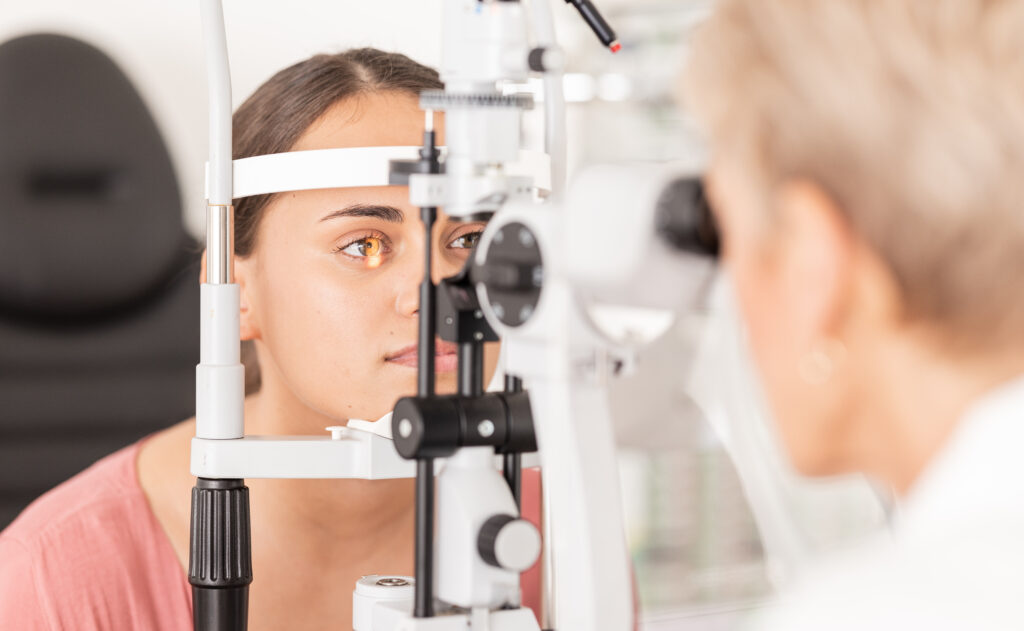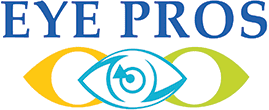How Eye Exams Change as You Age: From Kids to Seniors

As we grow and age, our bodies change—and so do our eyes. From childhood to senior years, vision needs evolve, and regular eye exams are the key to keeping your eyes healthy at every stage of life. But did you know that the way your eye doctor checks your eyes also changes depending on your age? Whether it’s a child’s first eye exam, an adult dealing with digital eye strain, or a senior monitoring for cataracts, regular visits to the eye doctor ensure that you catch any issues early and protect your vision over time. In this article, we’ll explore how eye exams shift through different life stages, so you know what to expect as you and your eyes age. Eye Exam for Kids Children’s vision develops rapidly in the early years, and regular eye exams are essential for ensuring their eyesight is on the right track. Detecting vision problems early can prevent long-term issues that may affect learning and development. Most parents are unaware that kids can have vision problems even before they complain about blurry vision or other symptoms. That’s why an eye doctor plays a key role in catching problems that might go unnoticed. Here’s why early eye exams are so important for children: Detecting common vision problems: Issues like lazy eye (amblyopia), crossed eyes (strabismus), or refractive errors (nearsightedness, farsightedness) are more easily treated when caught early. First eye exams: It’s recommended that children have their first comprehensive eye exam around the age of 3, or earlier if there are signs of vision issues. After that, regular exams are important to monitor their development. Visual learning: Since much of a child’s learning is visual, poor eyesight can lead to struggles in school. Kids may not realize their vision is blurry, which makes regular exams essential. By bringing your child to an eye doctor for regular check-ups, you can ensure that any vision problems are detected and treated early, giving your child the best start in life. Eye Exams for Teens and Young Adults As kids grow into their teenage years and young adulthood, their vision can still change significantly, especially with the increased use of digital devices. This is the age group most prone to digital eye strain, a condition caused by long hours spent in front of screens for school, work, or entertainment. Regular visits to an eye doctor during this stage are crucial to monitor vision changes and catch any developing issues early. Here’s why eye exams are important for teens and young adults: Screen time and digital eye strain: With so much time spent on phones, tablets, and computers, teens and young adults are more likely to experience digital eye strain. Symptoms include headaches, blurry vision, and dry eyes. An eye doctor can recommend strategies to reduce these symptoms, such as blue light filtering glasses or proper screen breaks. Changes in vision: For many young adults, vision problems like nearsightedness or farsightedness can become more apparent during these years. Teens may also need glasses or contact lenses to correct vision for driving, reading, or schoolwork. Sports and eye protection: For active teens, eye exams can also ensure that they have the right protective eyewear for sports. Whether it’s prescription goggles for swimming or protective lenses for contact sports, an eye doctor can guide teens on the best way to protect their eyes. Scheduling regular eye exams ensures that vision problems are caught early and helps maintain good eye health during these pivotal years of growth and change. Eye Exams for Adults (20s to 40s) In adulthood, vision tends to stabilize, but that doesn’t mean you can skip regular eye exams. As life becomes busier with work and other responsibilities, it’s easy to overlook eye health. However, this is the age when screen time increases significantly, which can lead to digital eye strain and other vision-related issues. Routine visits to an eye doctor can help ensure your vision remains clear and healthy as you juggle work, family, and other activities. Here’s why adults in their 20s to 40s should keep up with eye exams: Refractive errors: Many adults experience vision problems like nearsightedness, farsightedness, or astigmatism during this period. Corrective lenses, such as glasses or contact lenses, can help address these issues and maintain clear vision. Digital eye strain: With so much time spent on screens, many adults experience eye strain, headaches, and blurred vision. An eye doctor can suggest solutions like blue light lenses, proper screen settings, and taking breaks to reduce discomfort. Early detection of eye conditions: Regular eye exams can also catch early signs of more serious conditions, such as glaucoma, even if you aren’t noticing symptoms yet. Early detection is key to preventing vision loss. Contact lens care: For adults who wear contact lenses, eye exams ensure the lenses fit well and provide the correct vision correction. Poorly fitting lenses can lead to infections or discomfort, so it’s important to keep your prescription up to date. By maintaining regular eye exams, adults can protect their vision and catch any issues before they become more serious. Eye Exams for Middle-Aged Adults (40s to 60s) Once you reach your 40s, you might notice that your vision isn’t what it used to be. This is the stage of life where presbyopia—the age-related difficulty of seeing things up close—starts to set in. Whether you’re struggling to read fine print or finding it harder to focus on near objects, regular visits to an eye doctor become essential. Changes in vision are normal as you age, but an eye exam can ensure you get the right corrective lenses and detect any early signs of eye conditions. Here’s why eye exams in your 40s and 50s are so important: Presbyopia: This common condition makes reading or seeing things up close more difficult. Many people begin using reading glasses or multifocal lenses during this time, as recommended by their eye doctor. Increased risk of eye diseases: As you age, the risk of developing eye conditions like glaucoma,
